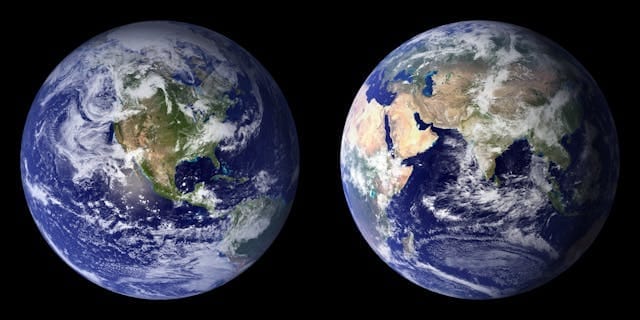What makes Earth unique in the solar system is life. Thanks to the presence of water, the right temperature, and a suitable oxygen-rich atmosphere, Earth is the only known celestial body that harbors life. From microbes to humans, Earth’s biosphere is vibrant and diverse.
Water: the Source of Life
Water plays a crucial role in supporting life on Earth. Approximately 71% of Earth’s surface is covered with water, primarily in the form of oceans. This water forms the foundation for many ecosystems, both in the sea and on land. Without water, life as we know it would be impossible. Water not only serves as a transport medium for nutrients but also helps regulate Earth’s temperature. This ensures conditions remain stable and habitable.
The Perfect Temperature
Earth is located at a perfect distance from the sun, in what astronomers call the habitable zone. This zone is neither too hot nor too cold, allowing liquid water to exist. If Earth were closer to the sun, like Venus, the water would evaporate and the surface would be far too hot for life. If the planet were further away, like Mars, the water would freeze. Earth’s temperature is just right to support life, making our planet unique in our solar system.
Atmosphere and Oxygen
Another key to life on Earth is the atmosphere, which not only contains oxygen but also provides a protective layer against harmful solar radiation. The atmosphere consists of various gases, including nitrogen (approximately 78%) and oxygen (approximately 21%), which are essential for life. The ozone layer in the atmosphere protects living beings from harmful ultraviolet radiation from the sun, while the greenhouse effect ensures that the sun’s heat is retained, keeping the planet at the right temperature.
The Search for Life Elsewhere in the Universe
Although we cannot observe life on Earth through a telescope, scientists use telescopes to search for signs of life on other planets. Mars, for example, is one of the planets receiving considerable attention in the search for traces of life. Thanks to telescopes like the Hubble Space Telescope and the new James Webb Telescope, we can study the atmosphere and surface of distant planets. This way, we try to discover if life might exist elsewhere in the universe.
Earth is often used as a reference point in the search for life elsewhere. Scientists compare conditions on other planets with those on Earth to determine if life could potentially exist there. Elements such as water, oxygen, and suitable temperatures are the key factors in the search for extraterrestrial life.
Earth’s Biodiversity
One of the most impressive aspects of life on Earth is its biodiversity. From the deep sea to high mountains, Earth harbors millions of different species of organisms. These organisms are divided into various ecosystems that are all interconnected in a delicate balance. Each organism, from the smallest bacterium to the largest whale, plays a role in the ecosystem in which it lives. This biodiversity is essential for the health and sustainability of our planet.
Conclusion
Life on Earth is possible due to a unique combination of factors: water, a stable temperature, and an oxygen-rich atmosphere. These perfect conditions have made life possible in all its diversity. Although scientists continuously search for signs of life on other planets, Earth remains, for now, the only place in the universe where life exists. Studying our planet and its unique characteristics helps us better understand what makes life possible, both here and elsewhere in the universe.








